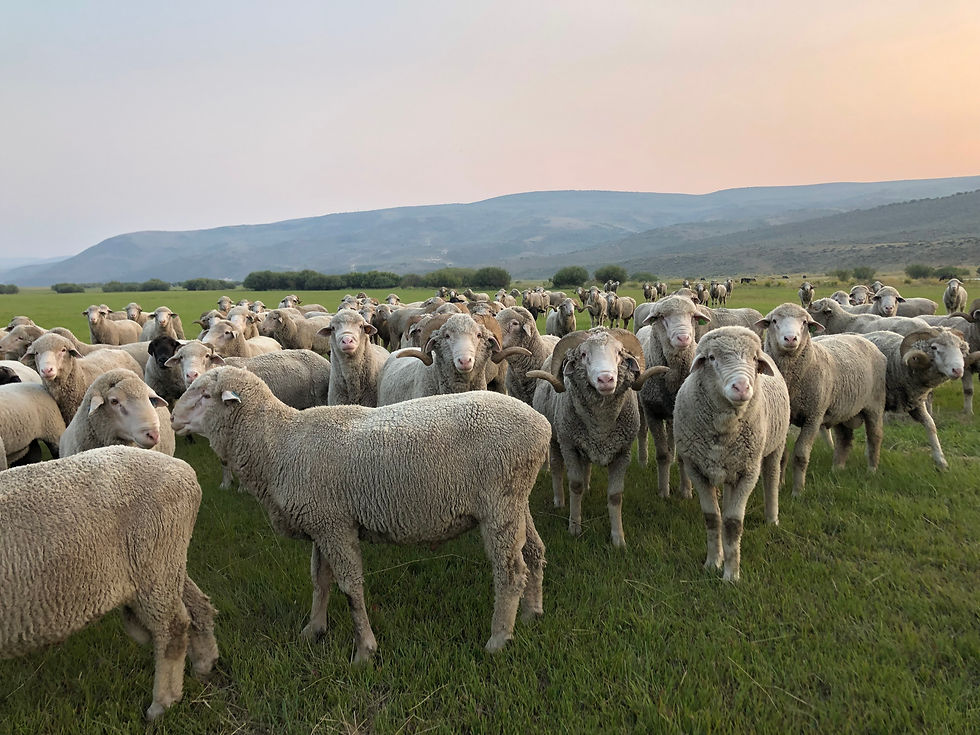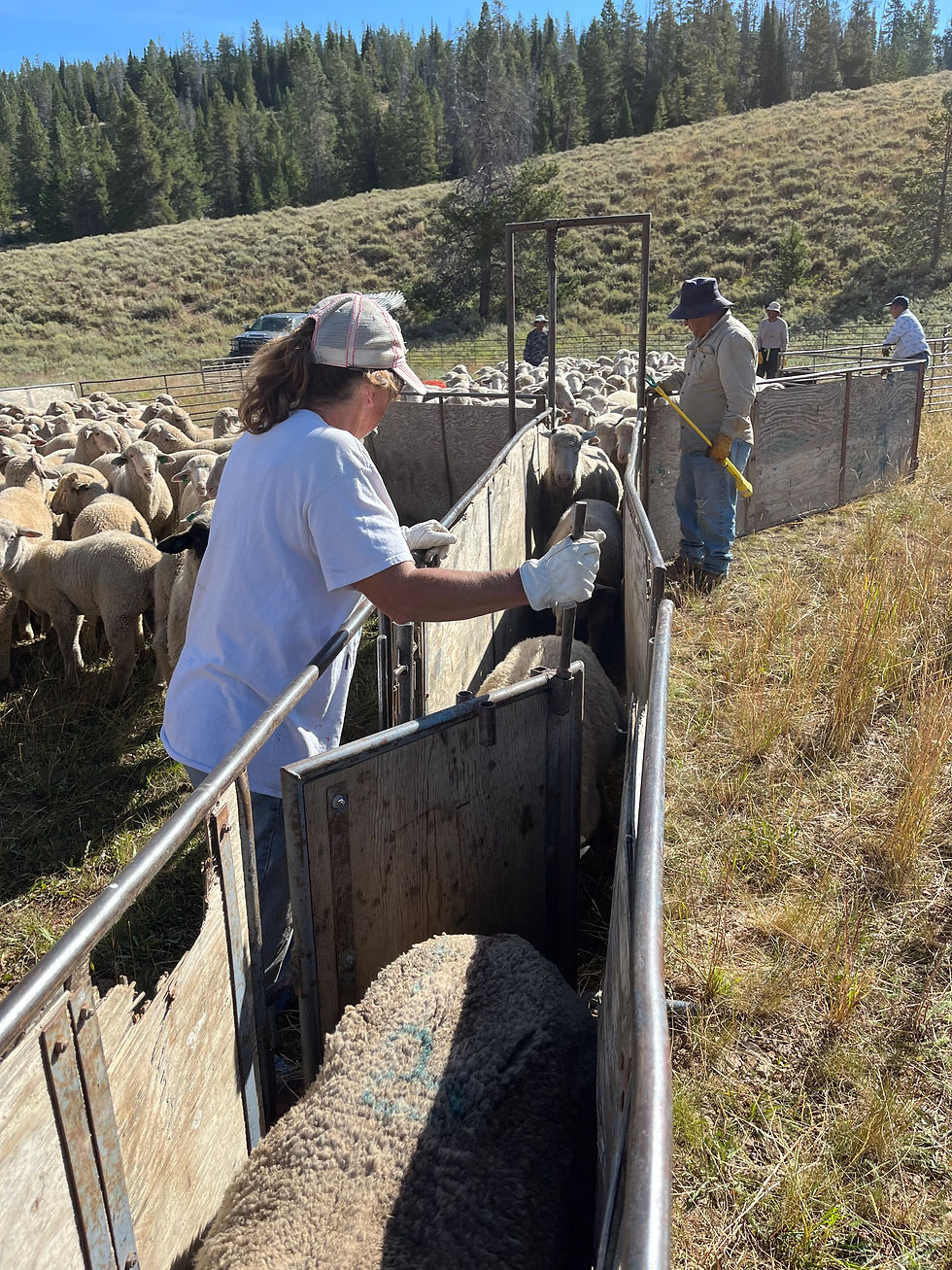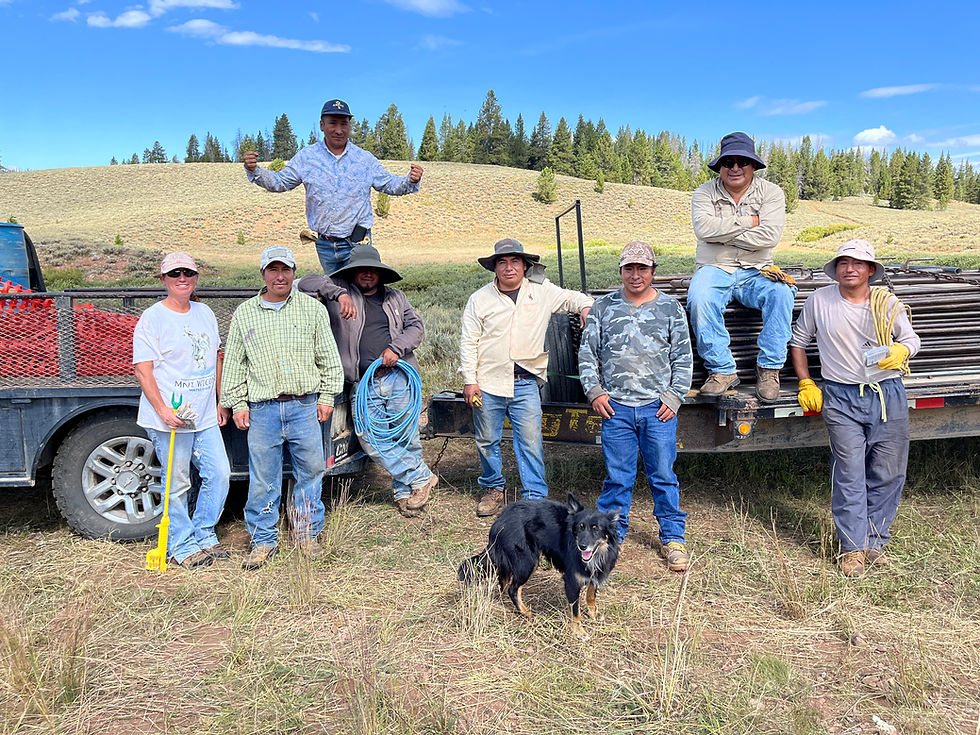A Few Things about Raising Bucks
- Marie

- Sep 1, 2023
- 3 min read

Cutting the ram lambs each summer:
We drag our double deck trailer, the other big Wilson trailer, and the portable sheep corral up the forested, rocky roads to the bunch of sheep that is gathered in an open area, waiting for our arrival. It is August 21st. The lambs in this bunch are the ones that we lambed early through the sheds in March and April. At around 5 months old, the ram lambs are old enough to want to start breeding the ewes that come into heat, so it is time for them to be weaned from their mothers and hauled to a pasture at the ranch to be run in a bunch of only ram lambs. We cut the black face ram lambs the week before, and mix the two sets of lambs.


We set up the metal and wood panels into the shape of an alley with a catch pen off the cutting gate in the front, and zig zag the open metal panels out either side like a funnel into the alley. We and the dogs herd the sheep through the brush, into the large opening, and then close the panels in behind them as they funnel towards the alley. My mom runs the cutting gate as the rest of us keep the sheep moving forward. She watches for lambs with green tags, indicating that they are bucks, and sorts them into the catch pen behind her while letting the ewes and ewe lambs run by her and out of the corral. Once we have them sorted, we back the trailers up to the alley and load the 144 buck lambs onto them. We then tear down and load the corral before gathering briefly to chat with the guys with a water and cold fried chicken in hand. For the first time ever, everything goes extremely smooth. Nothing jumps out of where they’re supposed to be so we don’t have to chase or rope anything, and we don’t get any flat tires!


Rams, oftentimes also referred to as bucks, are male sheep left intact for breeding. We raise our own bucks out of two small bunches of ewes that we keep separate from the rest of our range flocks, and we use these bucks to breed our range ewes. We raise both black face, Hampshire x Suffolk cross, and all white, Rambouillet, rams. The black face sheep are stockier/meatier sheep that do not stay in a herd well and do not have high quality wool. The reason many producers like using black face rams is because when they are bred to all white ewes they produce lambs that are bigger and faster growing for producing meat, while the lamb is still being raised by a good mothering ewe that can be ran out on the range with the rest of the herd. It is with this cross that you get the cute speckle face or smut face lambs. Rambouillet sheep are known for having nice, fine wool, good mothering ability, staying bunched together in a herd, and being hardy for running in rough conditions. The Rambouillet rams bred to our range ewes produce the ewe lambs that we keep as replacements for our herd as well as ewe lambs that other producers buy for their replacements to go into their herds. The wether lambs, or male lambs that were castrated, are used for meat.
Not all producers raise their own bucks, they buy them from other producers that do, such as us. It’s a lot of work, and you have to have separate pastures for all the different aged bucks: the lambs, the yearlings, and the mature rams. You also need separate pasture for the black face ewes, as they don’t stay in a herd with the whites. In the fall, we have to draw blood for testing on all of the mature and yearling rams and collect semen on the yearlings before they are turned out with ewes for the first time to make sure they are good to breed. We catch each buck individually in a tip table to do all the works to them. It is an all day endeavor. We also must trim hooves, when needed, each time we have the bucks in a corral. The mature and yearling bucks get hauled out to the ewes on the desert starting December 10th while the ram lambs stay at the ranch to grow another year.

We raise our own bucks to ensure the genetics we like by selecting for specific traits, such as good wool (in the Rambouillets), bigger sized sheep, good mothers, and hardy. Our bucks are known for being real tough and outliving a lot of everyone else’s other bucks. You've got to be tough to live here; it’s survival of the fittest around this ranch!








Comments